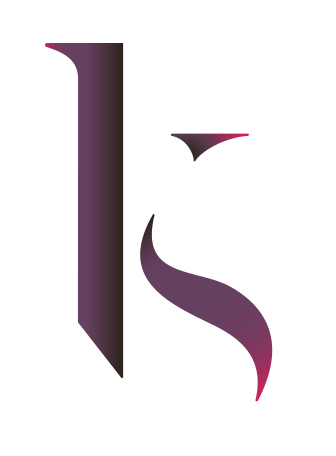Mastering Haute Couture Hand Embroidery
My Experience with the Couture Embroidery Artist Course
Project Details
Year:
2021
School:
Vintage Rose Couture Embroidery Academy
Tags:
Project Description
The Couture Embroidery Artist Course provided me with in-depth, practical training in haute couture embroidery, covering both traditional needlework and Luneville embroidery techniques. Each project was inspired by a world-famous city and focused on a different set of materials, stitches, and embellishment methods.
Across six levels, I explored a wide variety of embroidery techniques used in haute couture, while refining my existing skills. This structured approach allowed me to build confidence and expertise in composition, texture, and detail. Completing the full course deepened my understanding of couture embroidery and gave me the foundation I now apply in both my artworks and teaching.
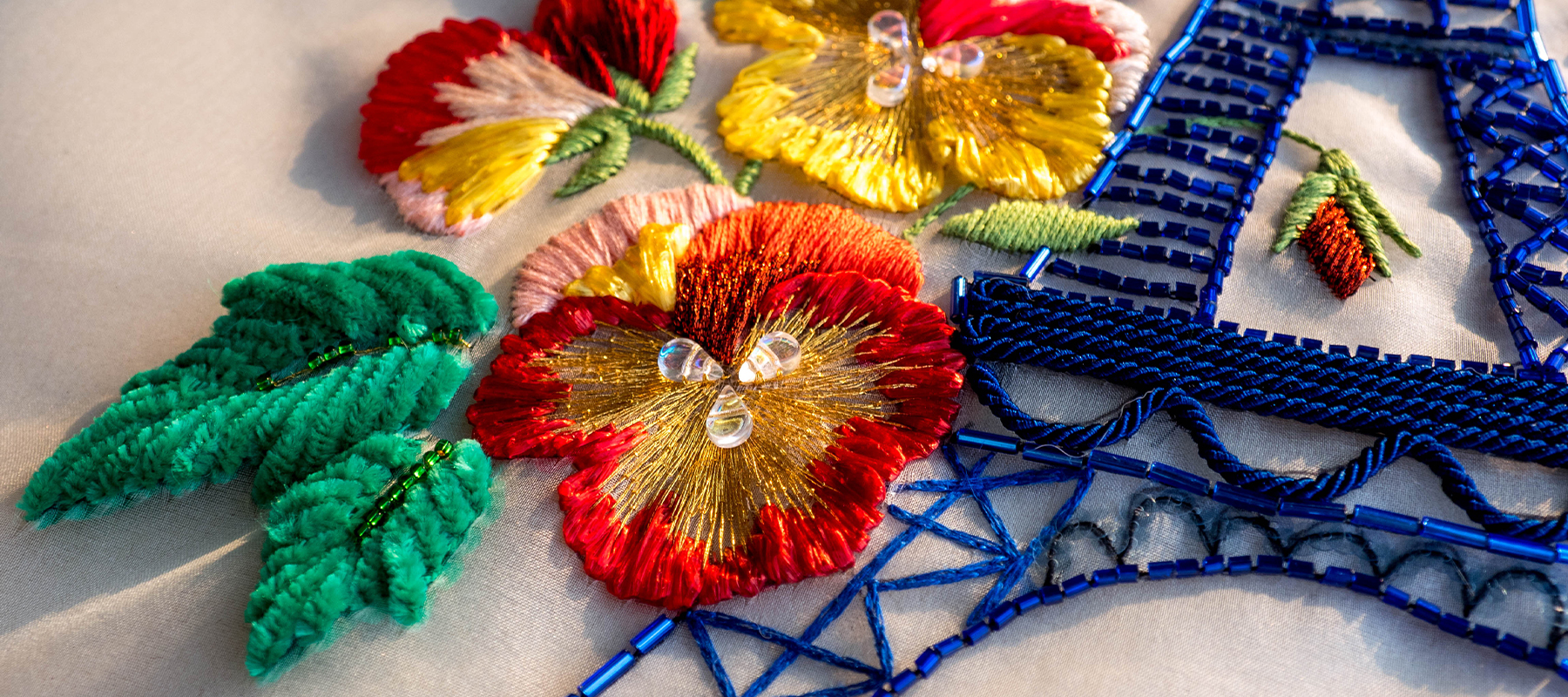
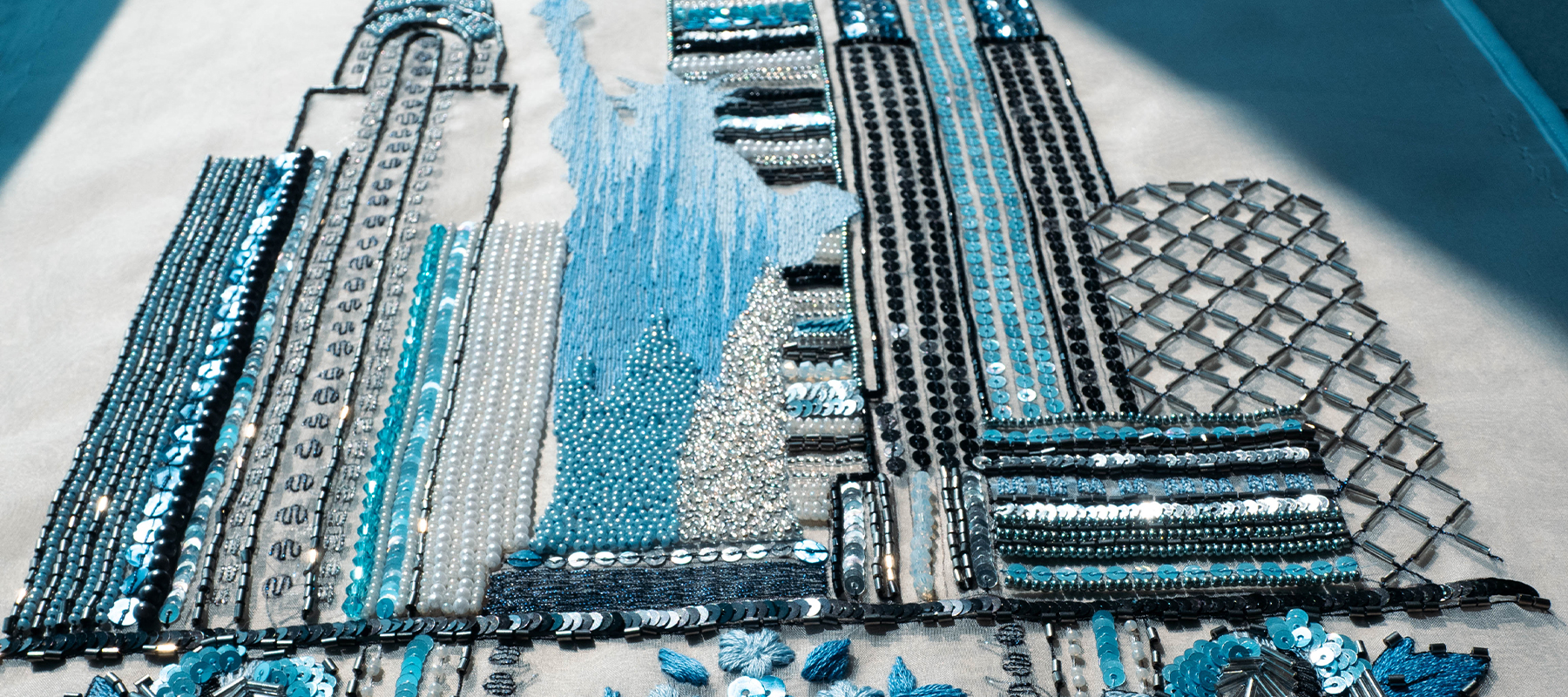
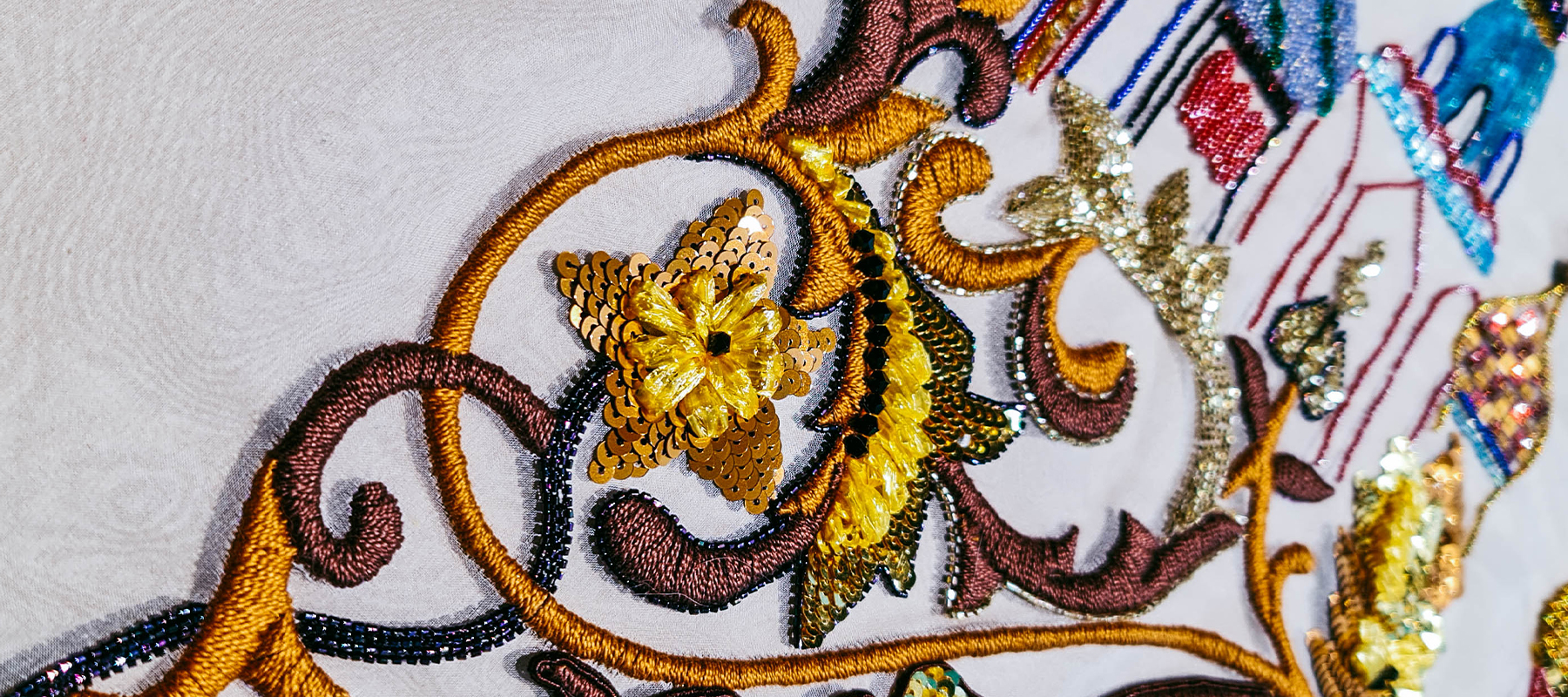
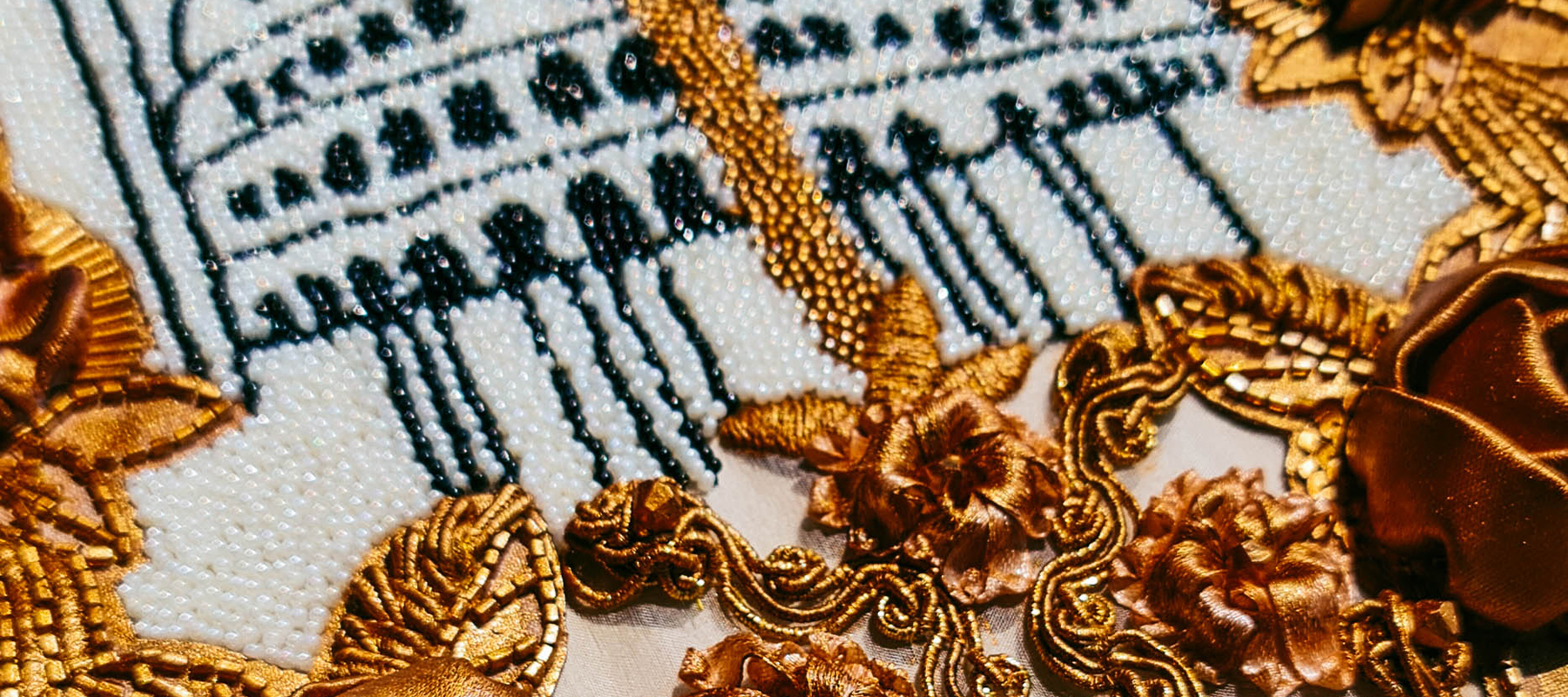
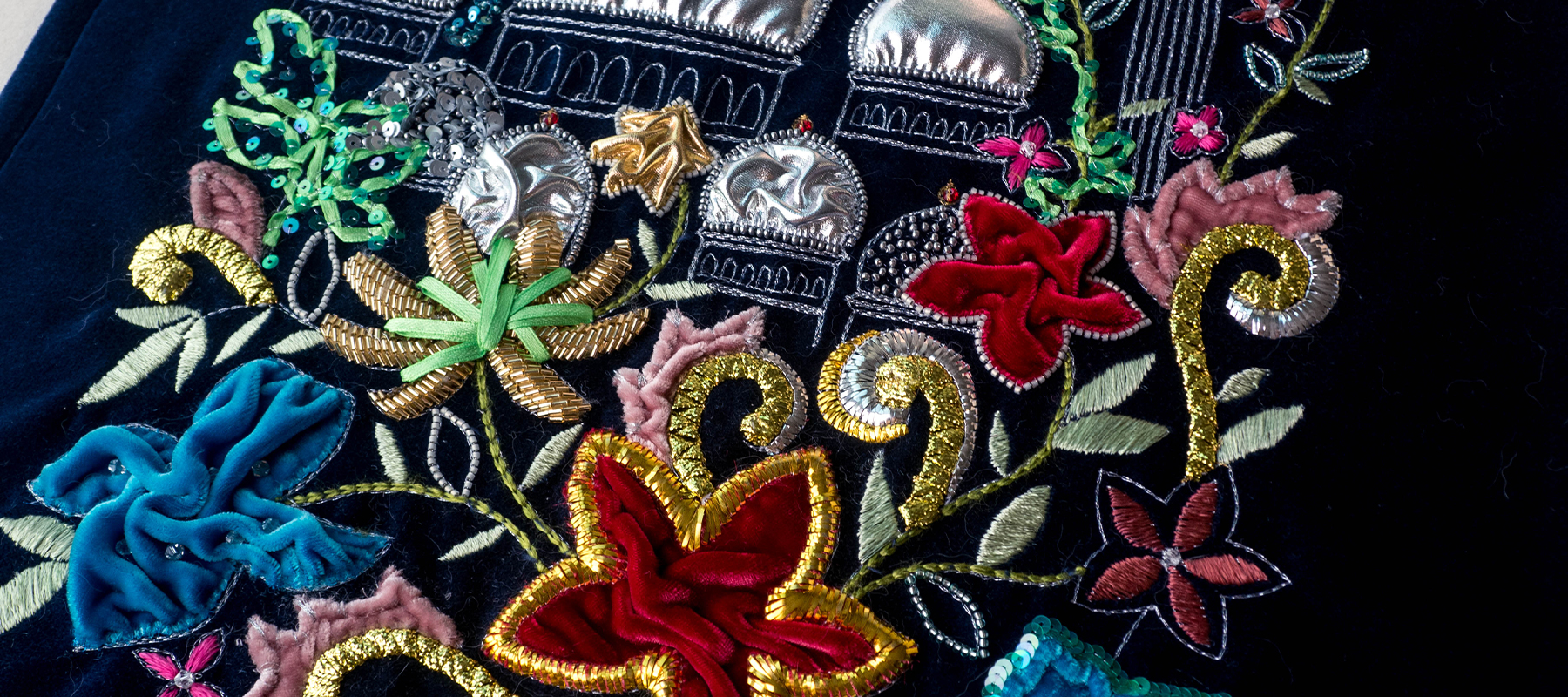
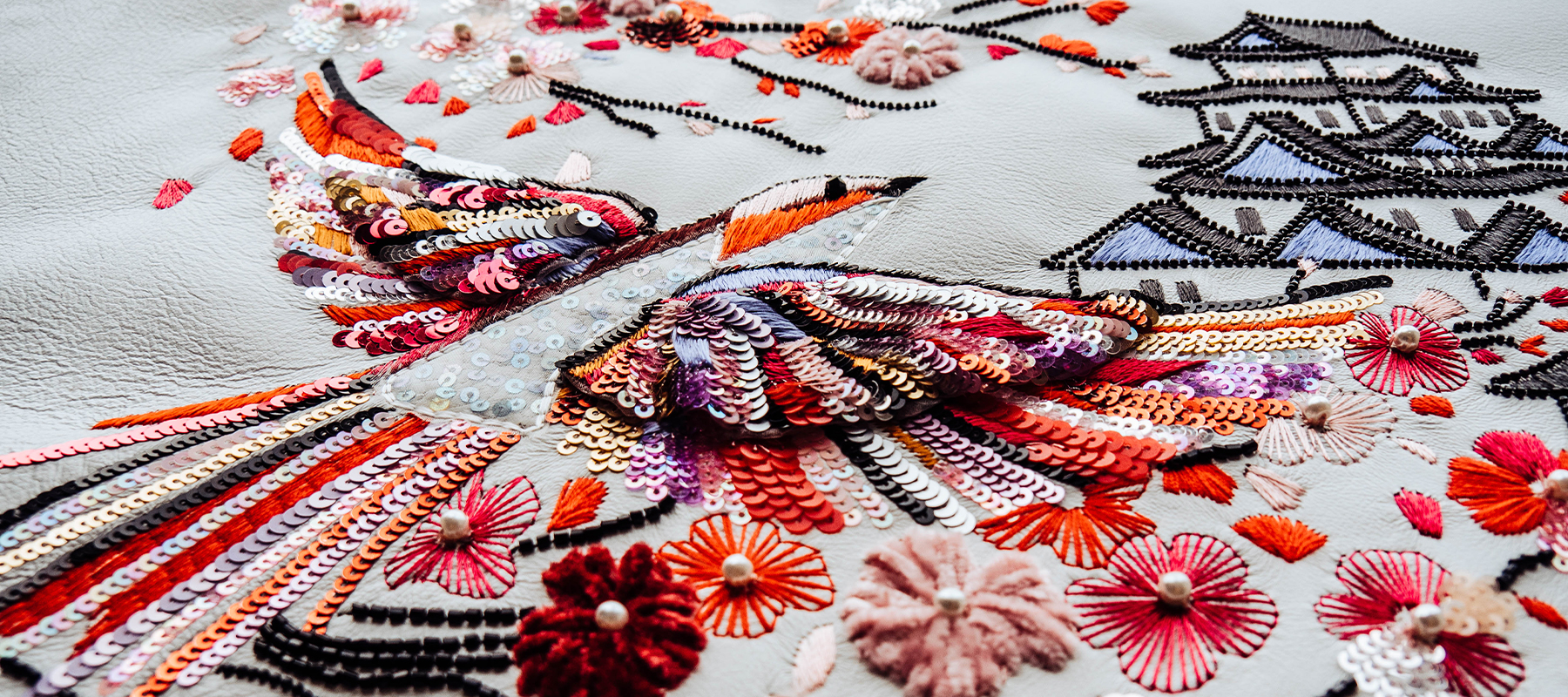
Level 1. Paris
Primary Materials:
Beads, tubes (2 and 6mm), flat sequins (4mm), cup sequins, chenille, raphia, cotton threads, metallic gold thread, twisted braid.
Basic Techniques:
Chain stitch filling; applying faceted sequins and tubes “in a river”; flat stitch; french knot; lazy daisy stitch; placement of cup sequins, tubes, sequins, beads; placement of rhinestones; chenille embroidery; raphia stitching.
Work Format:
A3 (297×420mm)
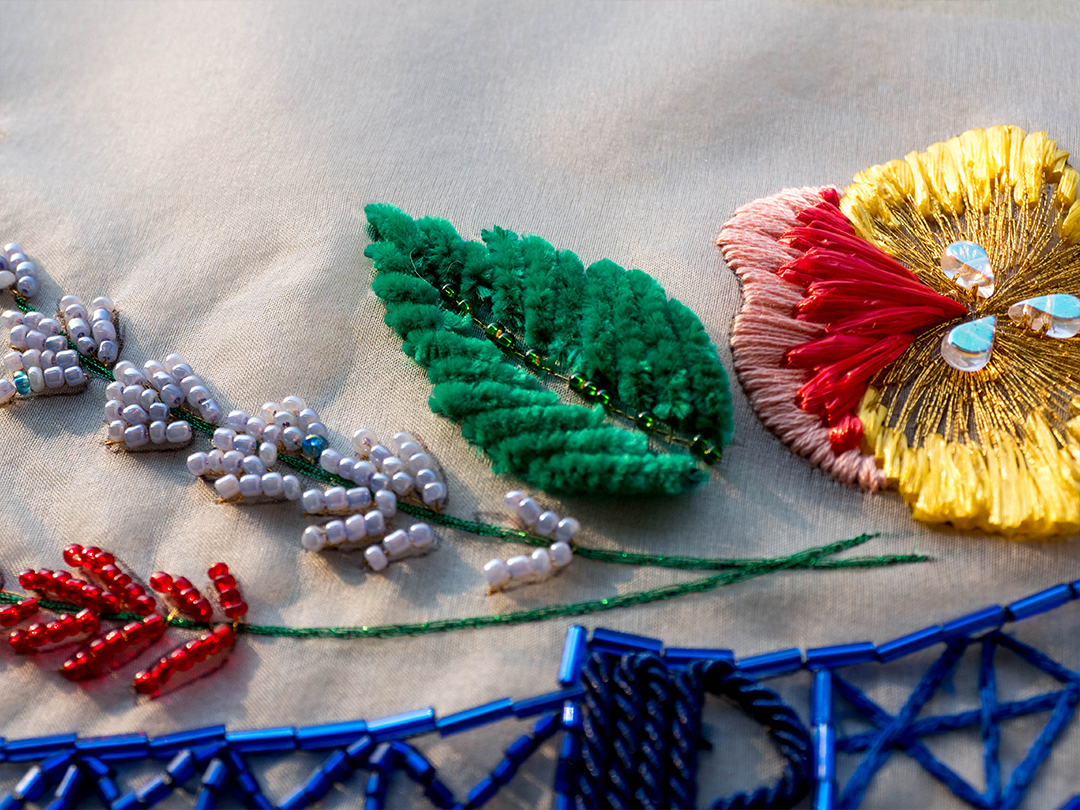
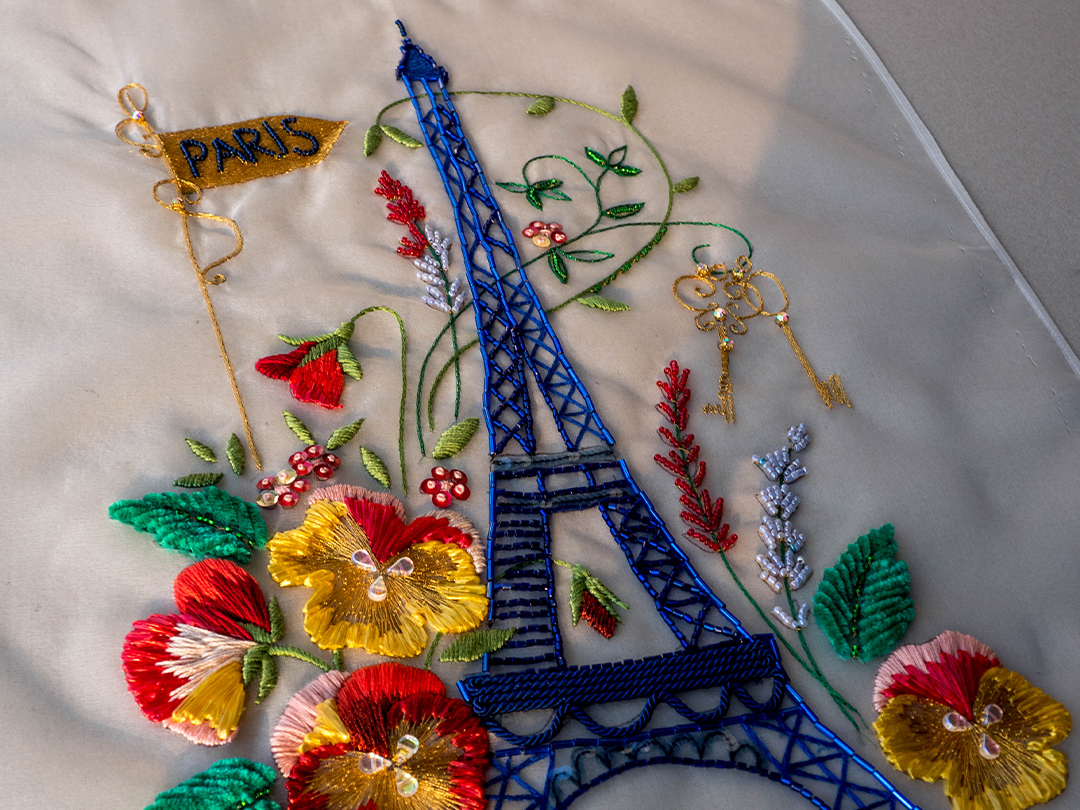
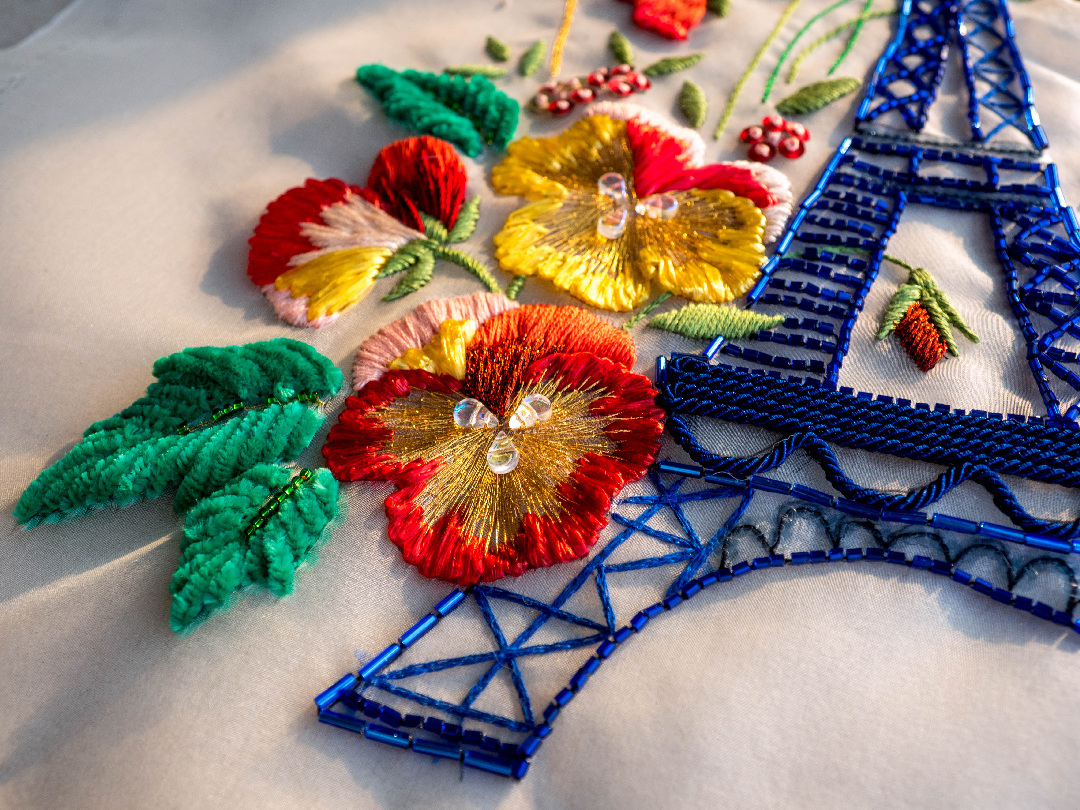
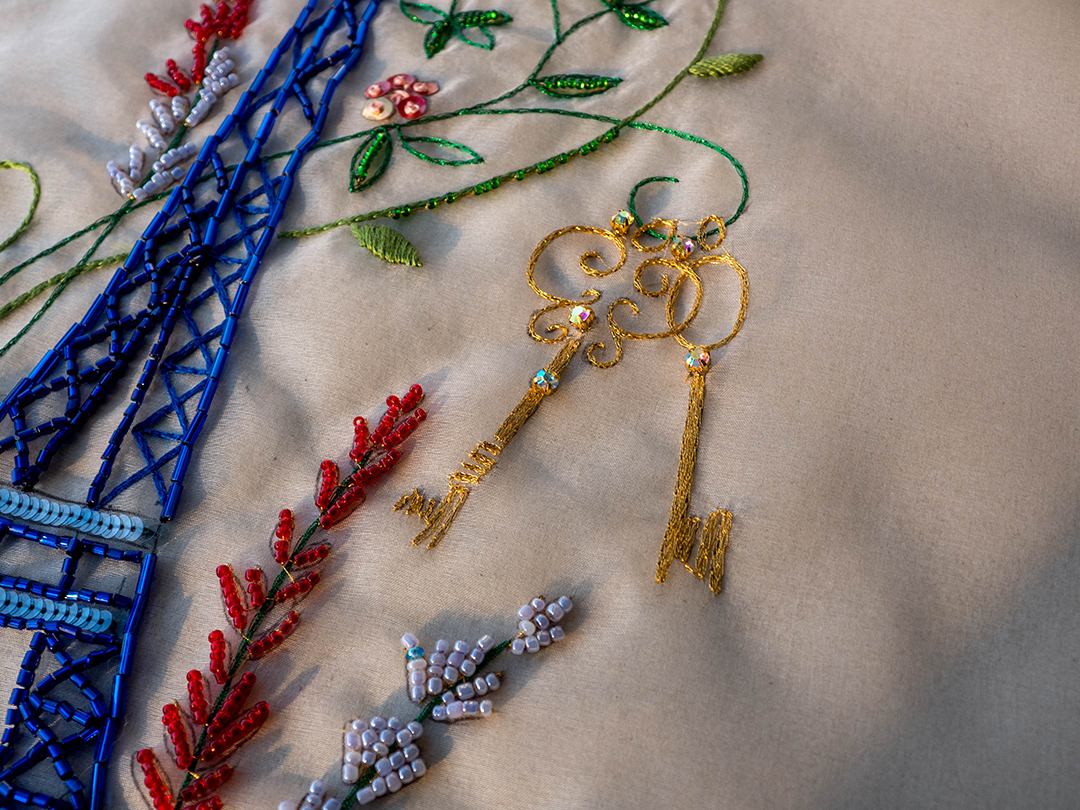
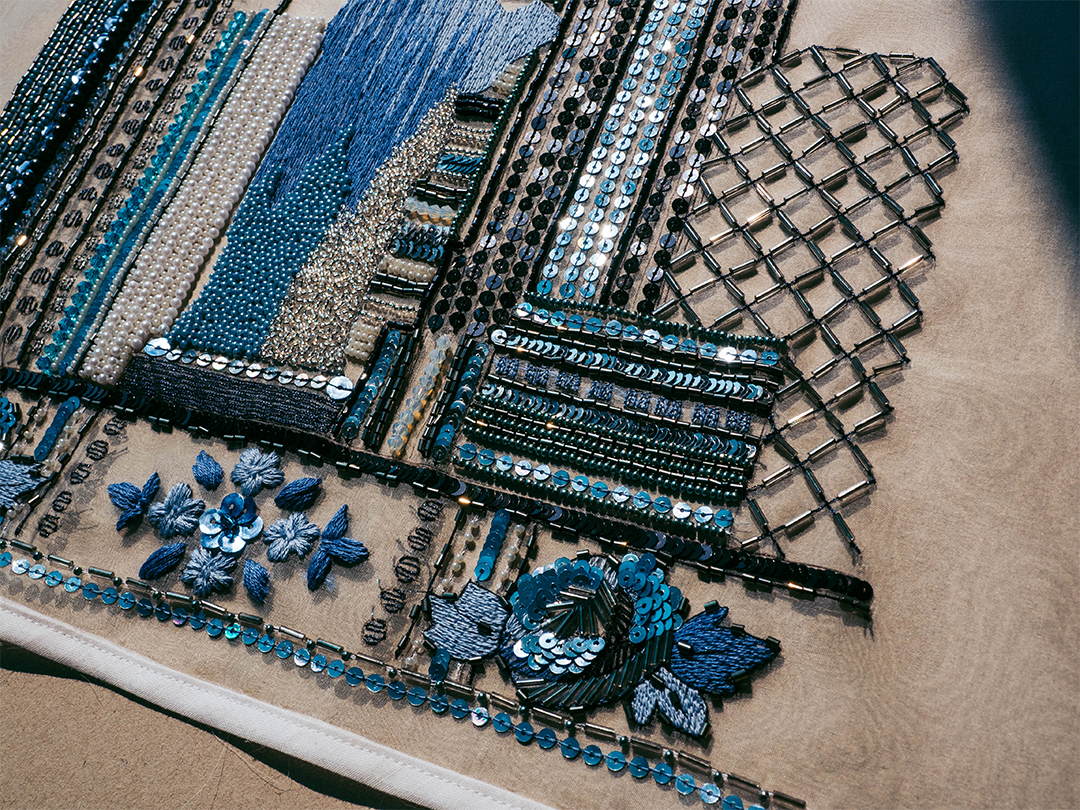
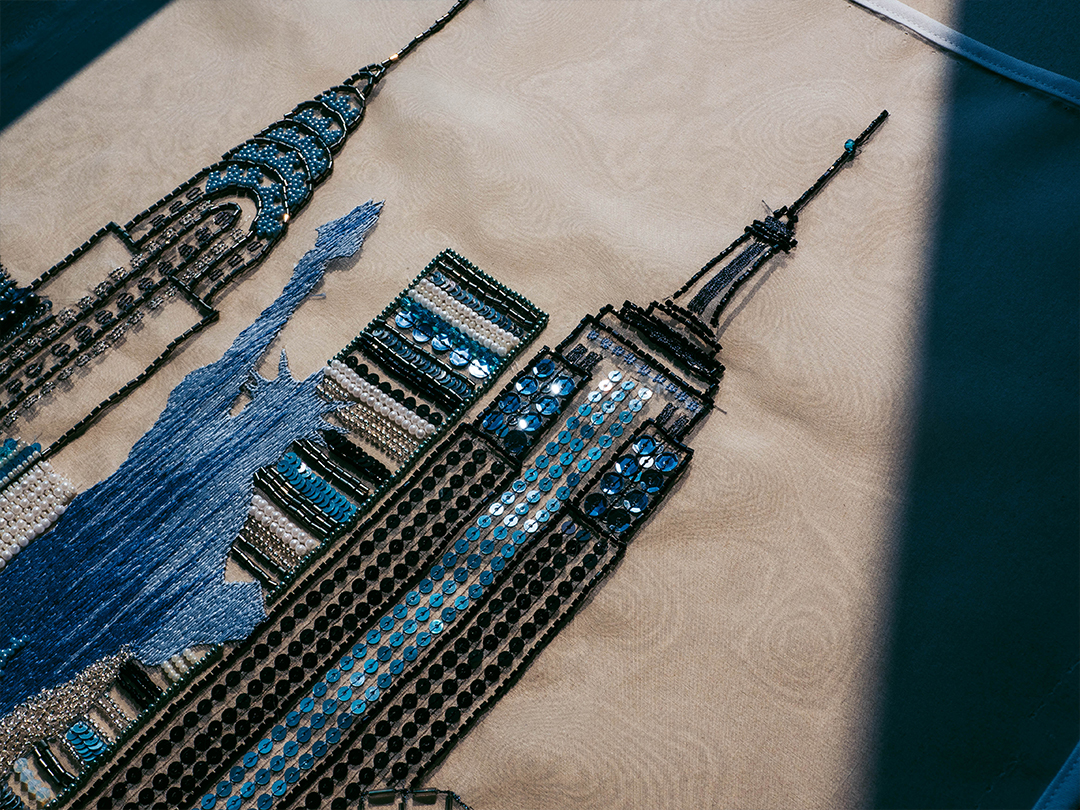
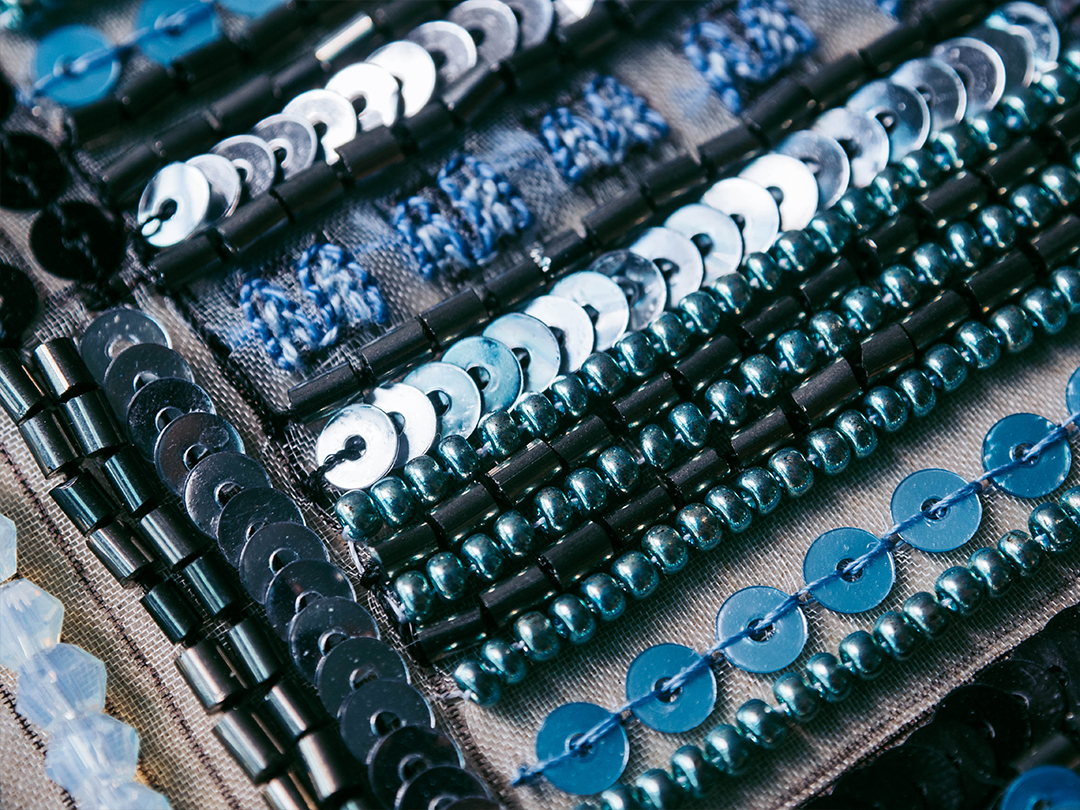
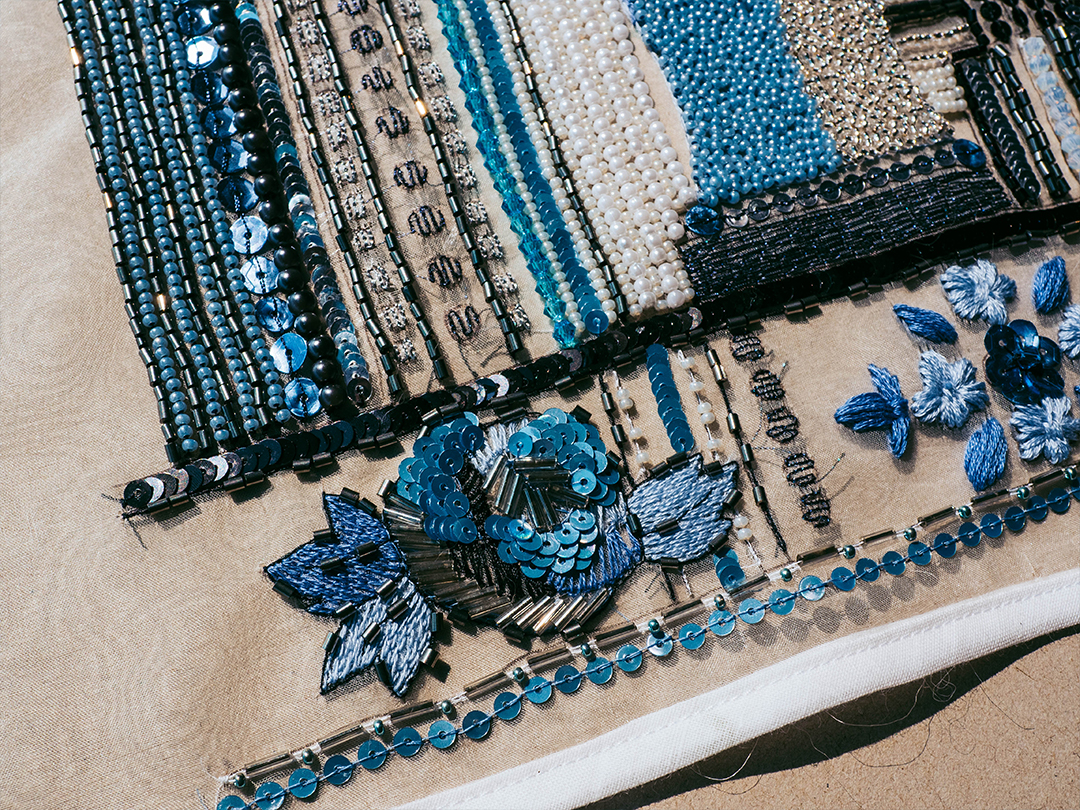
Level 2. New York
Primary Materials:
Beads, fancy beads, tubes (2 and 6mm), flat sequins (4mm), cup sequins, cotton threads, metallic threads (different thicknesses).
Basic Techniques:
Applying fancy beads, cotton flat stitch, applying beads, sequins, tubes “in a river”, English brick-style sequin application, filling in with a reverse chain stitch, vermicelli beading, grid stitching
Work Format:
A3 (297×420mm)
Level 3. Sankt Petersburg
Primary Materials:
Beads (13/0 and 15/0), fancy beads, tubes (2 and 6mm), flat sequins (4mm), square sequins, cotton threads (different thicknesses), soutache.
Basic Techniques:
Applying braid or raffia in back-and-forth or coiled, applying fancy beads, applying upright braid, cotton padding with the Boulogne stitch, flat stitching, applying beads, tubes and sequins “in a river”, English brick-style sequin application, vermicelli beading.
Work Format:
A3 (297×420mm)
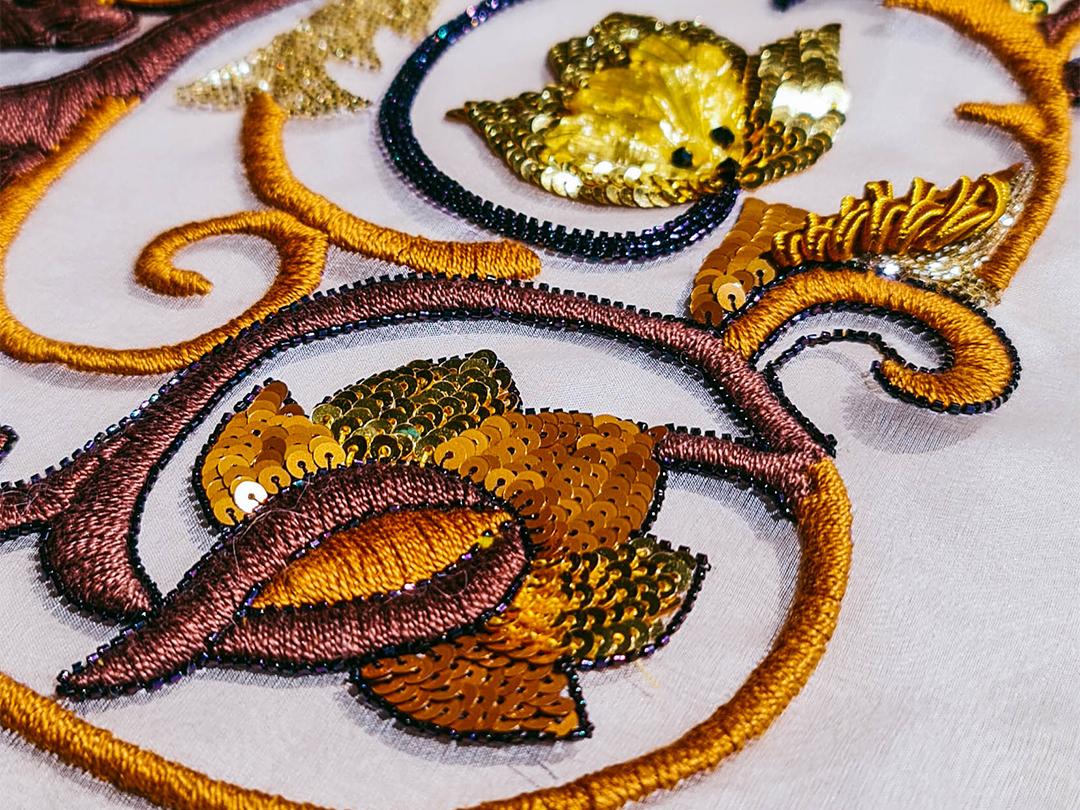
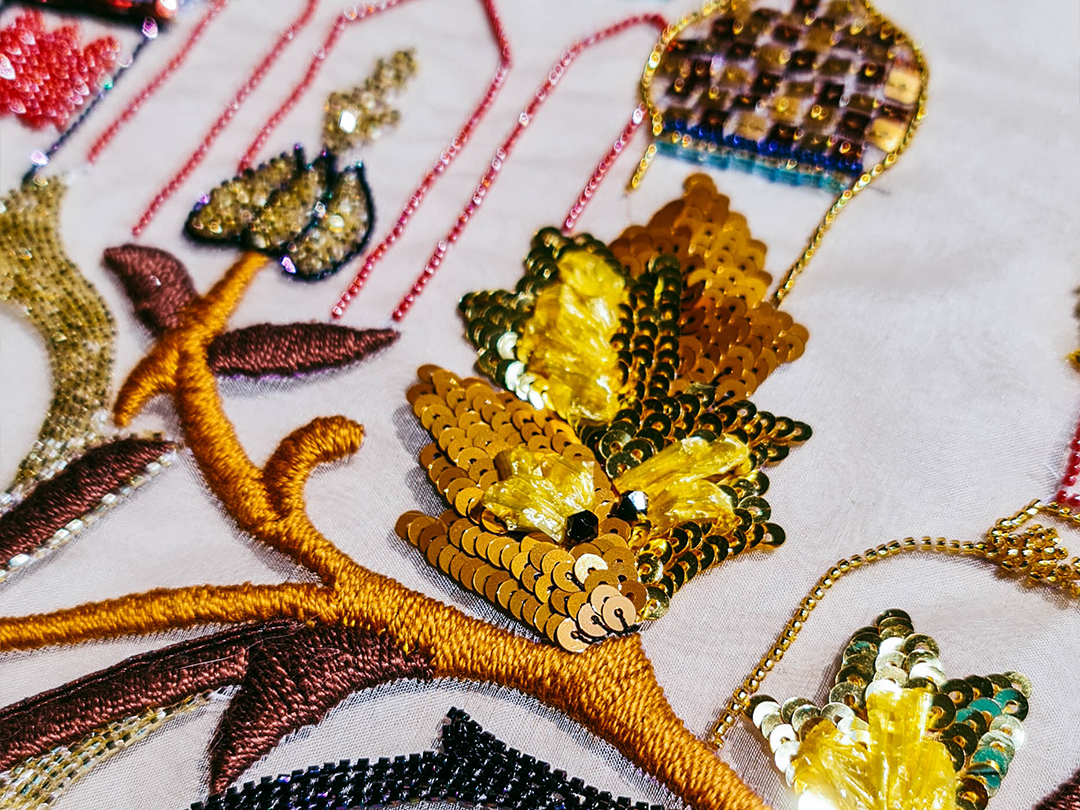
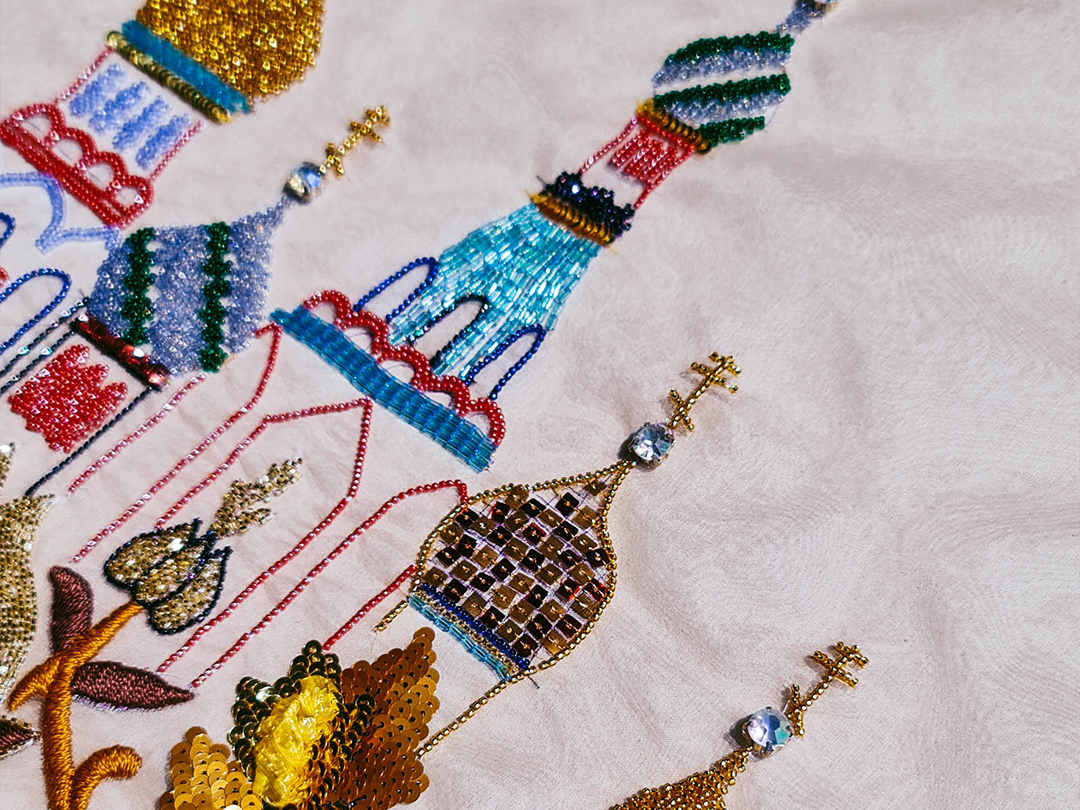
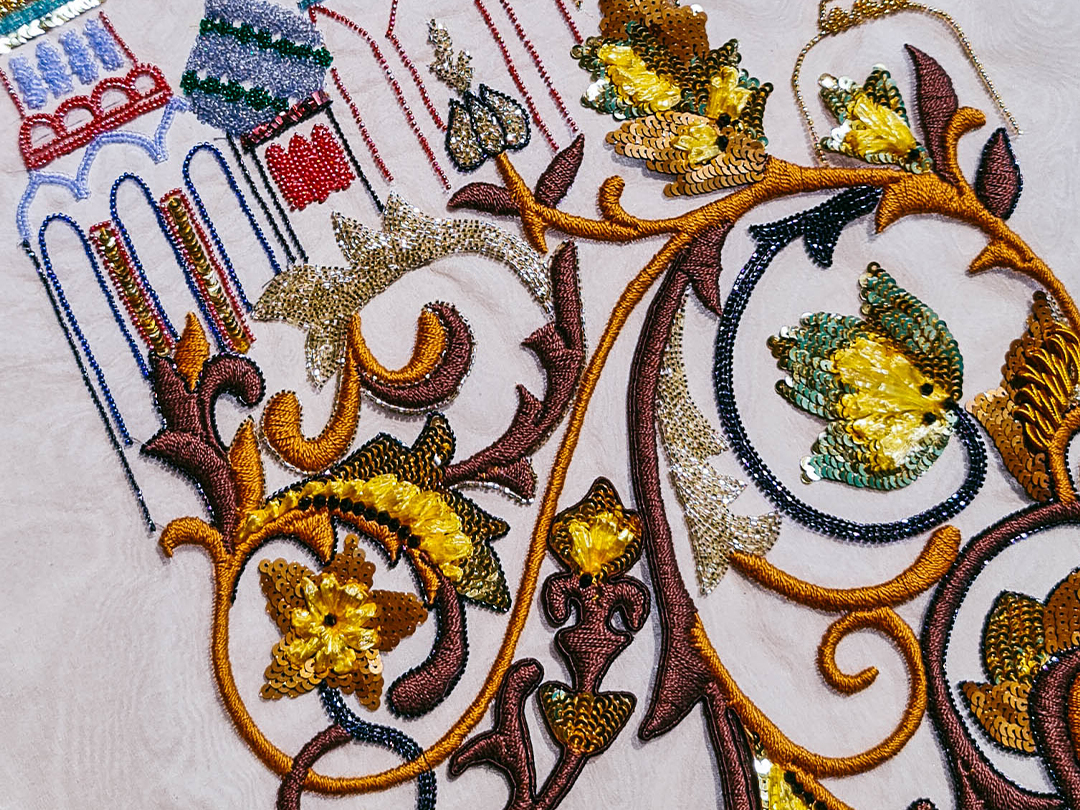
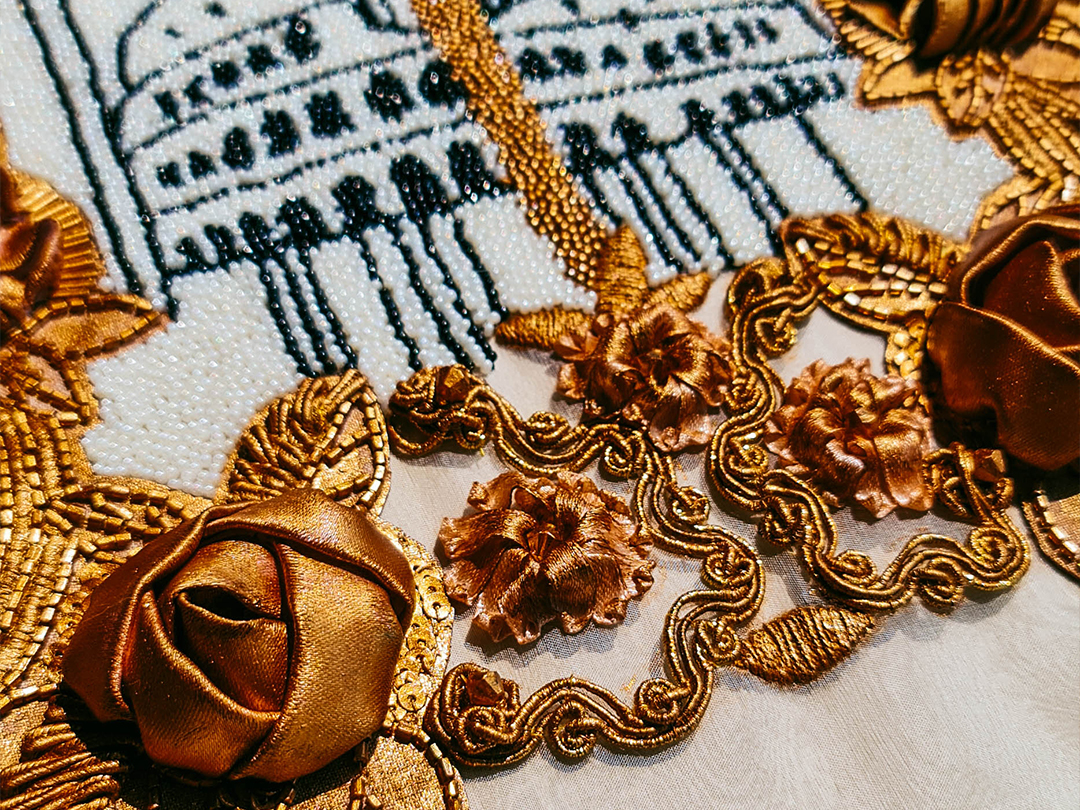
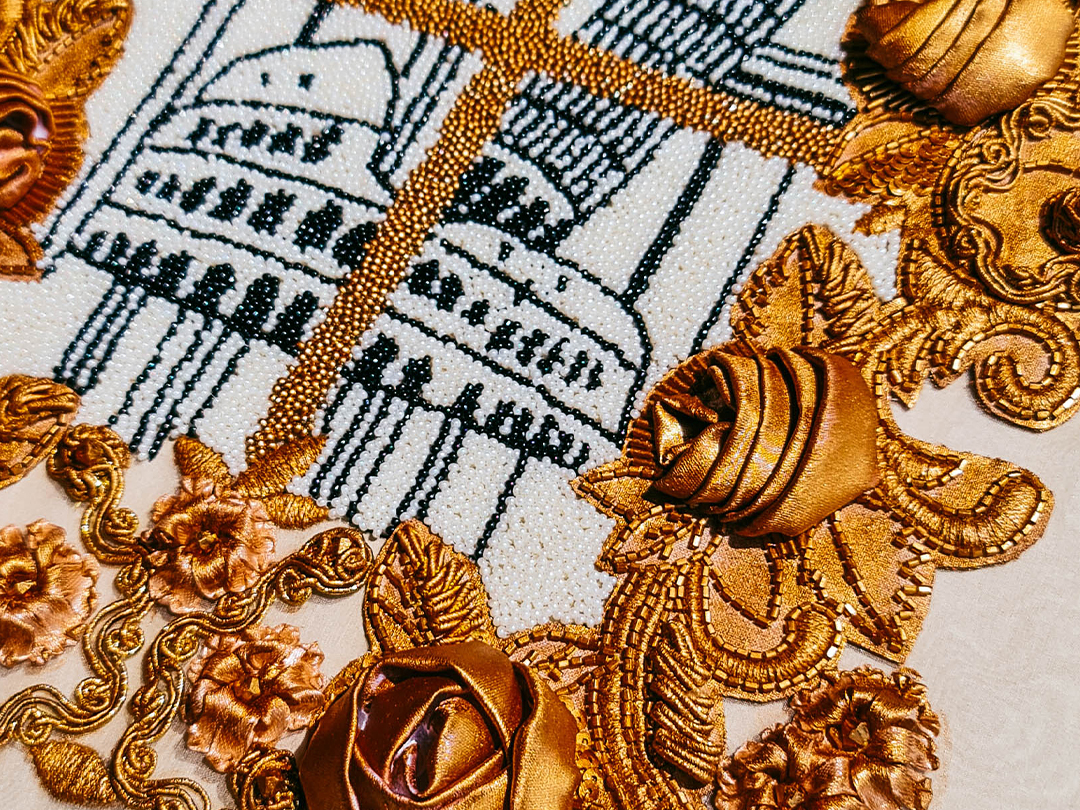
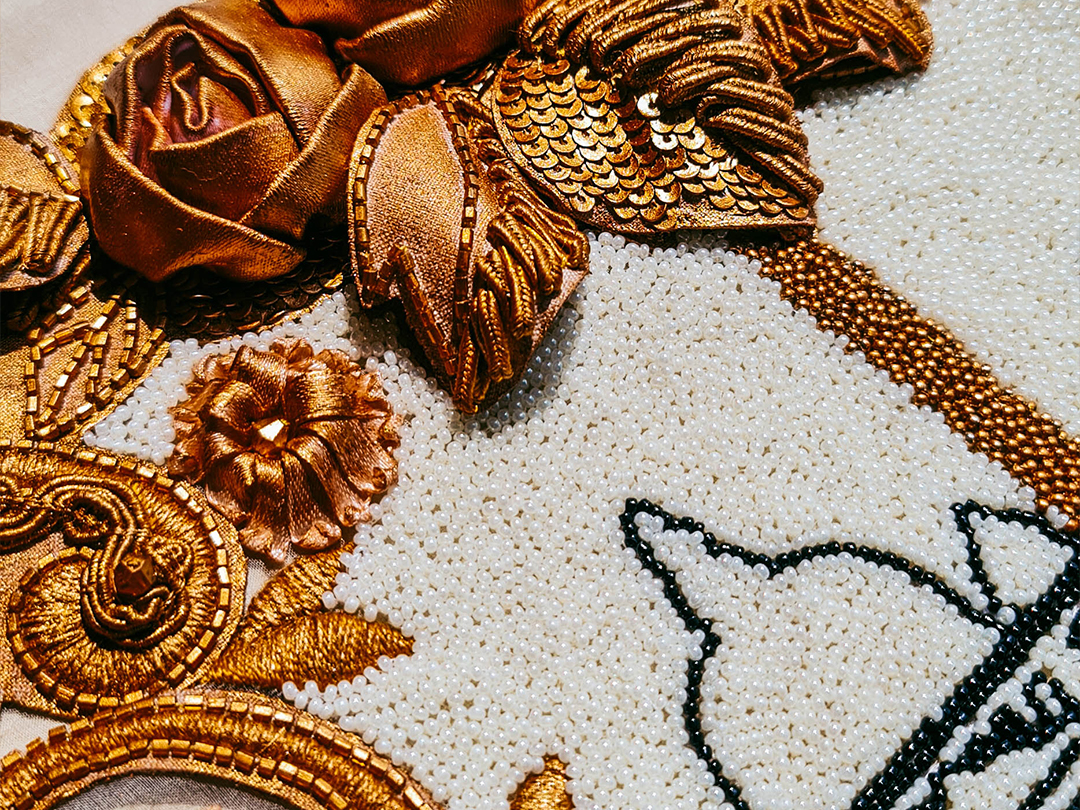
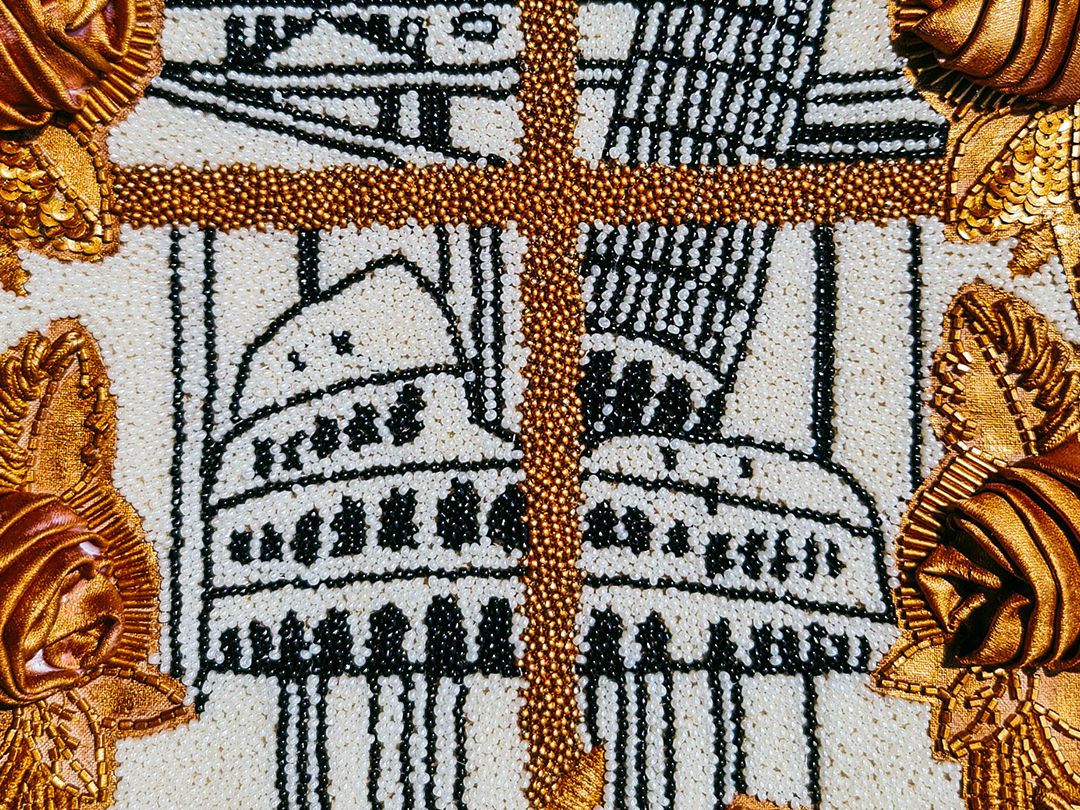
Level 4. Rome
Primary Materials:
Beads, fancy beads, tubes (2 and 6mm), flat sequins (4mm), cotton threads (different thicknesses), soutache, ribbons.
Basic Techniques:
Applying fancy braid and ribbon, applying fancy beads, applying upright braid, cotton padding with the Boulogne stitch, flat stitching, applying tubes and sequins on opaque fabric, vermicelli beading, hemfolding technique, ribbons embroidery.
Work Format:
A3 (297×420mm)
Level 5. Dubai
Primary Materials:
Beads, fancy beads, tubes (4mm), flat sequins (3 and 4mm), ribbons, untwisted silk, metallic threads, wool thread, metal stripes, velvet, leather.
Basic Techniques:
Taut and creased leather and velvet techniques, applying plastic and metal strip on padding or flat, Application of tubes and beads in a row, applying sequins upright, tight backstitching of tubes and beads on padding and flat, applying fancy beads, vermicelli beading, ribbons embroidery, tambour stitch with silk (needle 120), encroaching stitch in silk on velvet, mousse stitch.
Work Format:
A3 (297×420mm)
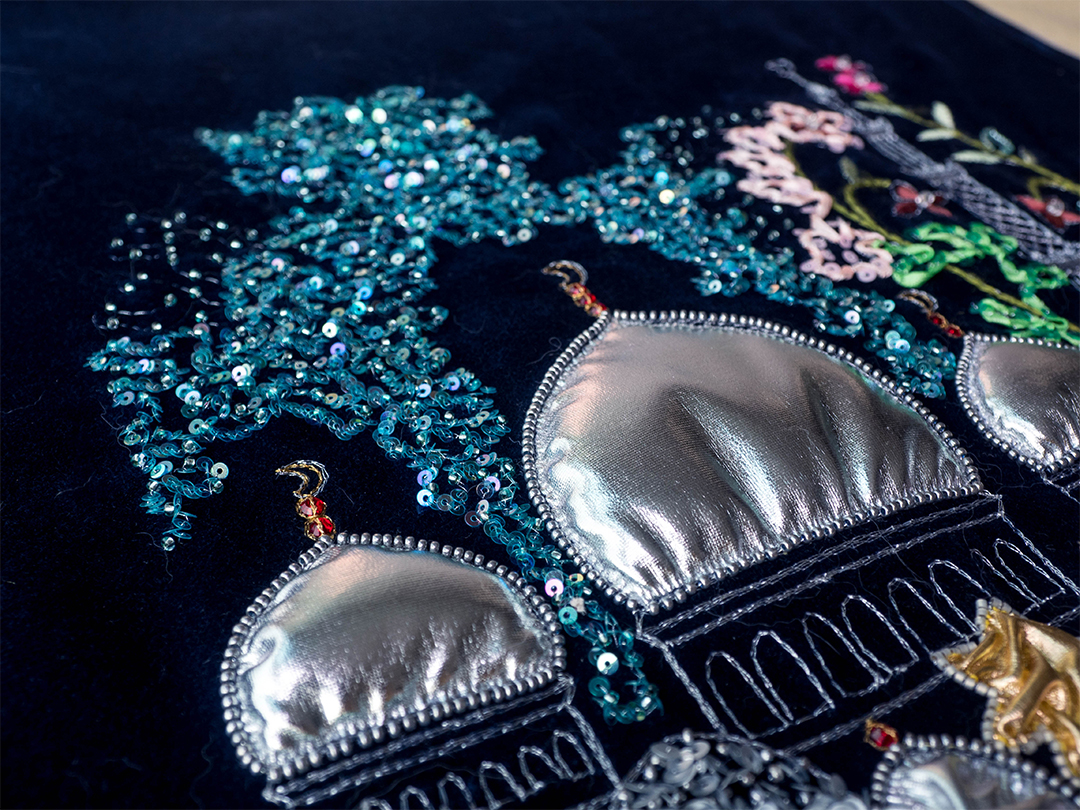
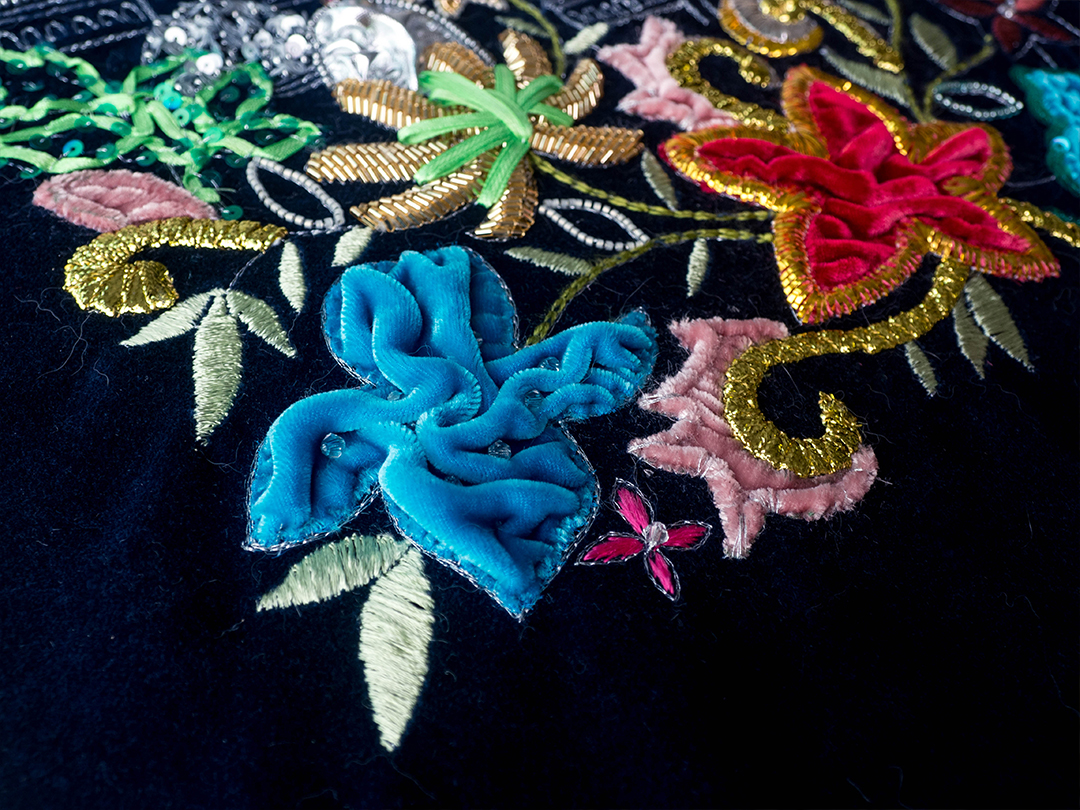
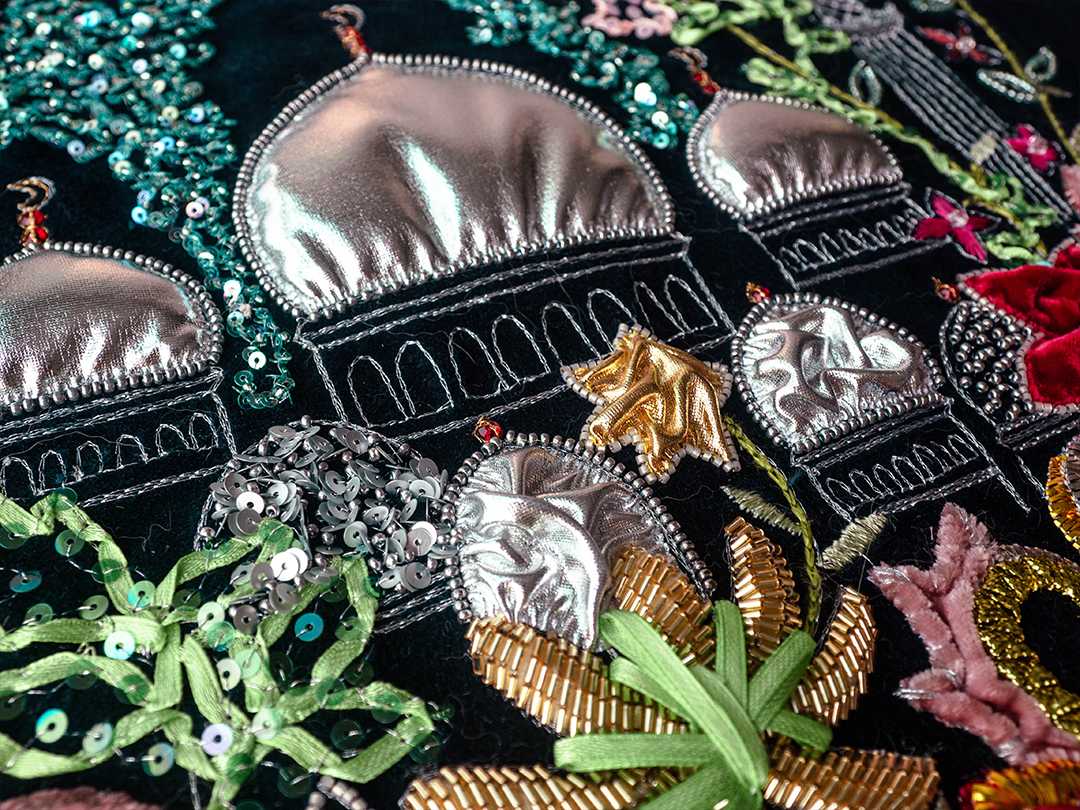
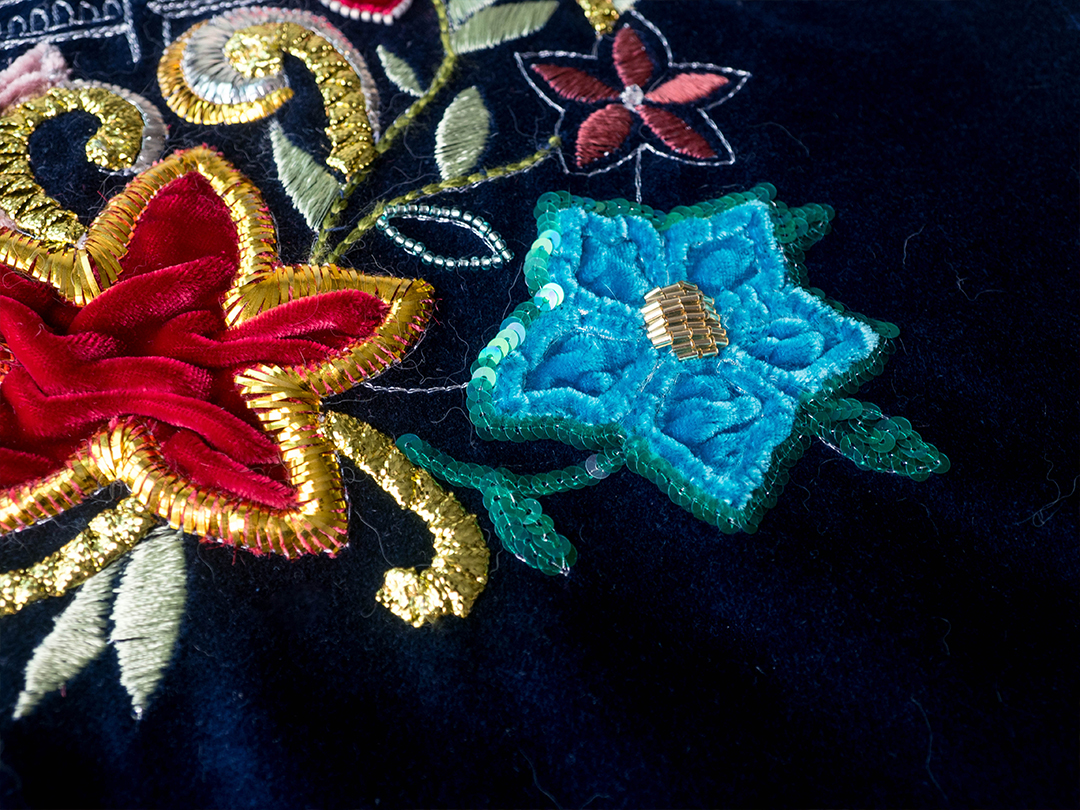
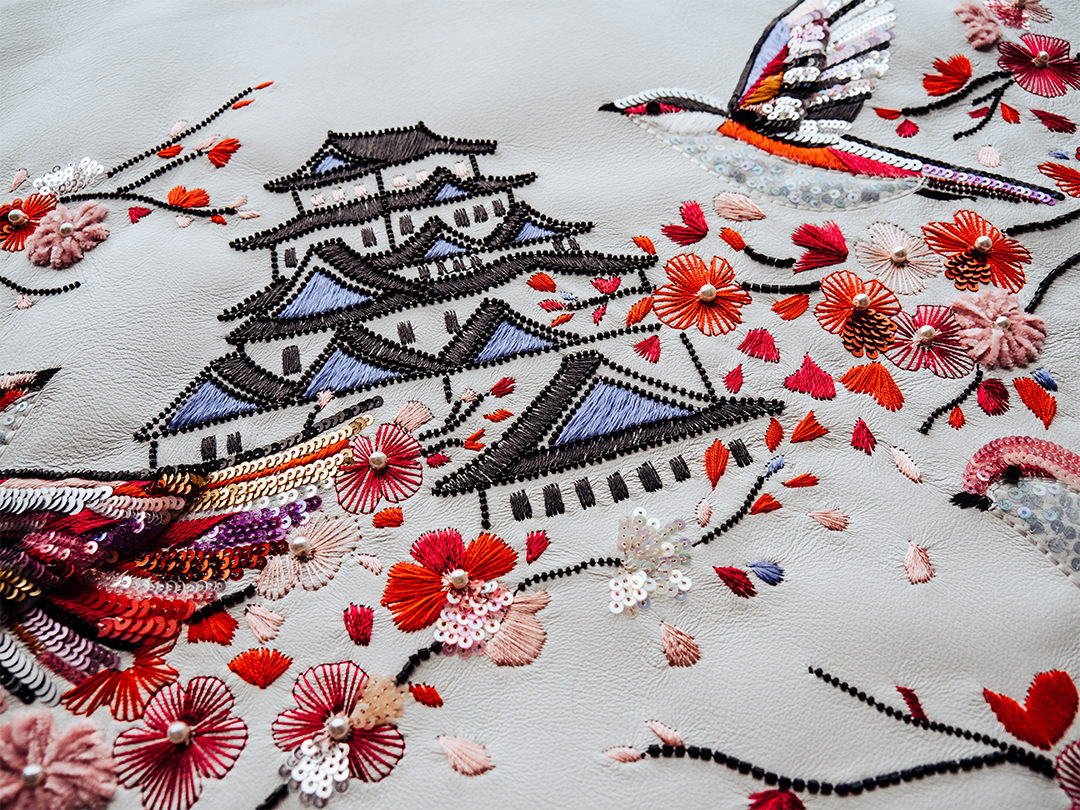
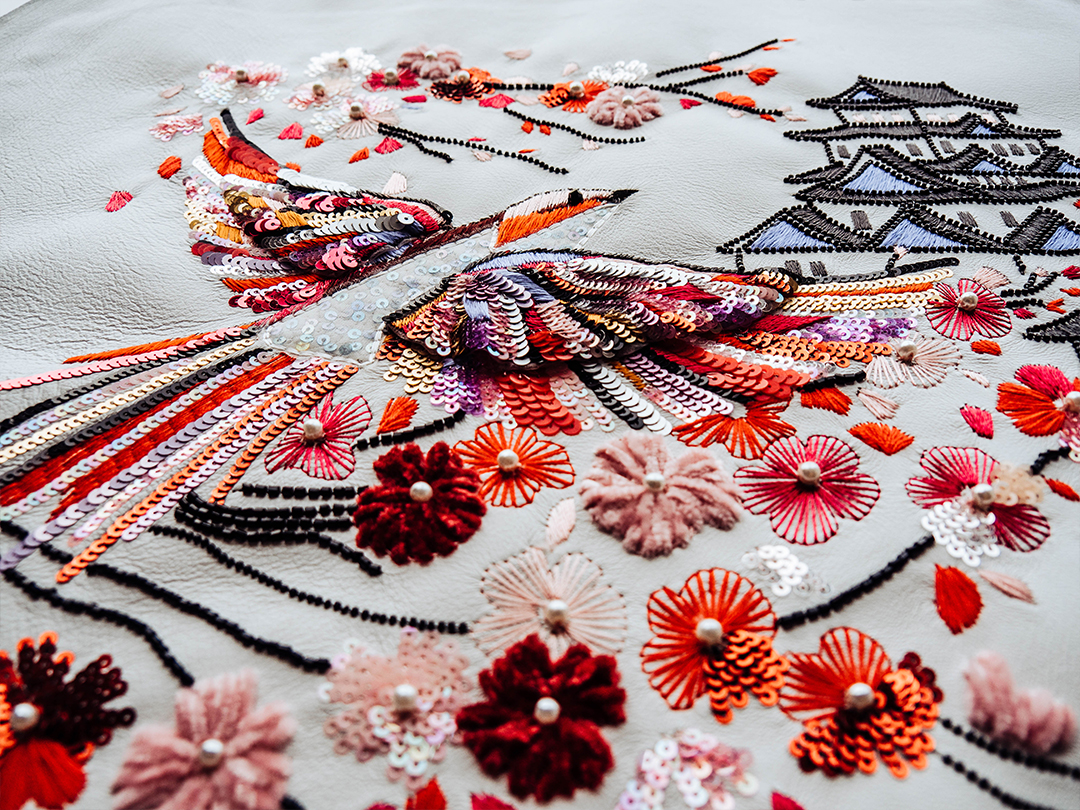
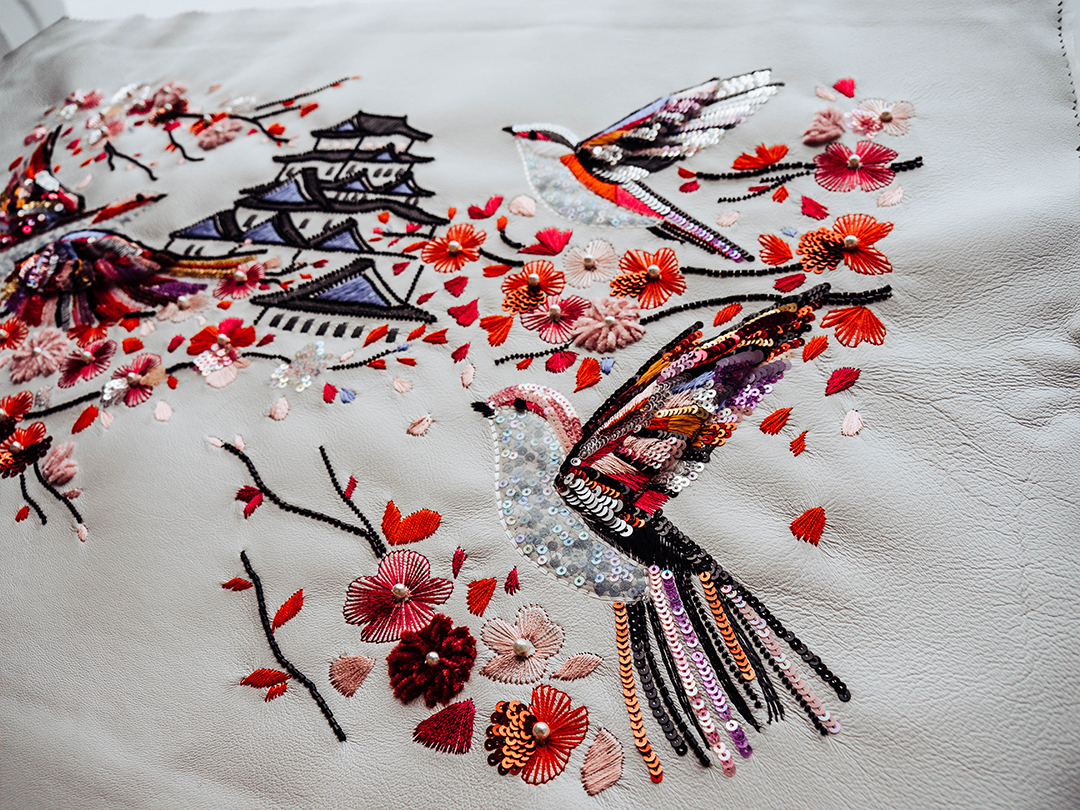
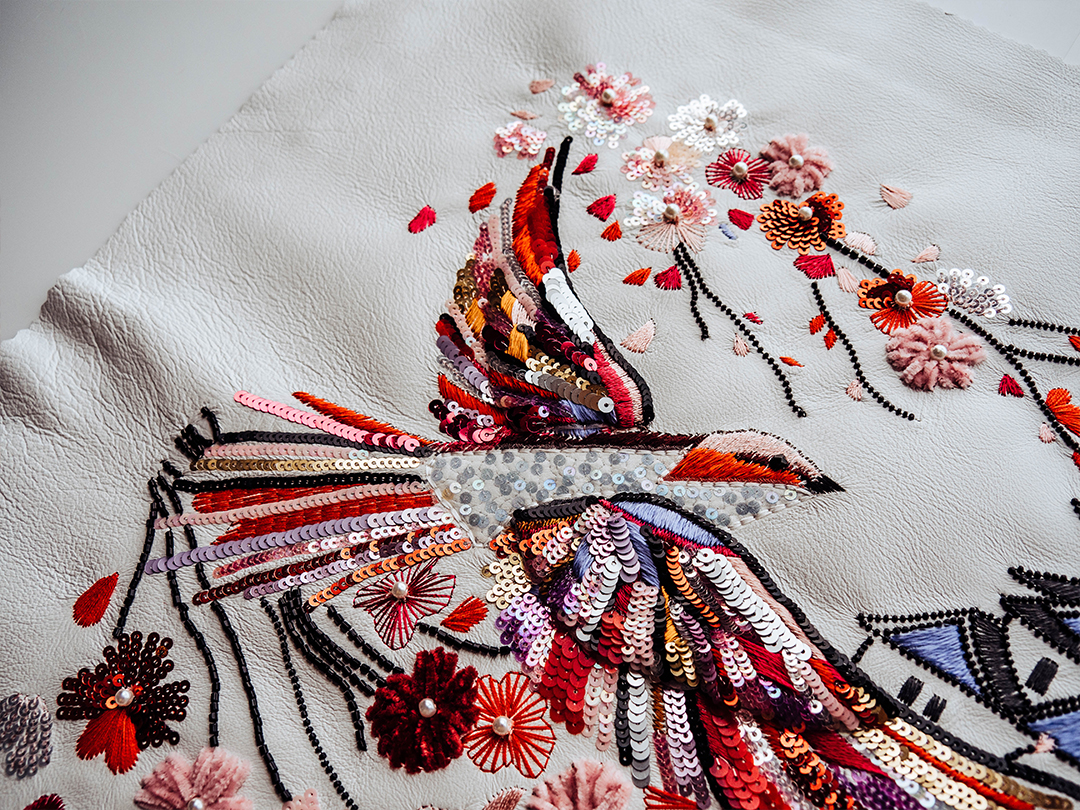
Level 6. Tokyo
Primary Materials:
Beads (13/0 and 15/0), fancy beads, tubes (2 and 6mm), flat sequins (3mm), square sequins, untwisted silk threads (different thicknesses), chenille.
Basic Techniques:
Apply organza with riche stitch, application of tubes and beads in a row, applying fancy beads, vermicelli sequin application, tambour stitch with silk on leather, encroaching stitch in silk on leather, mousse stitch, chenille flat stitch.
Work Format:
A3 (297×420mm)
Video Presentation of each Level
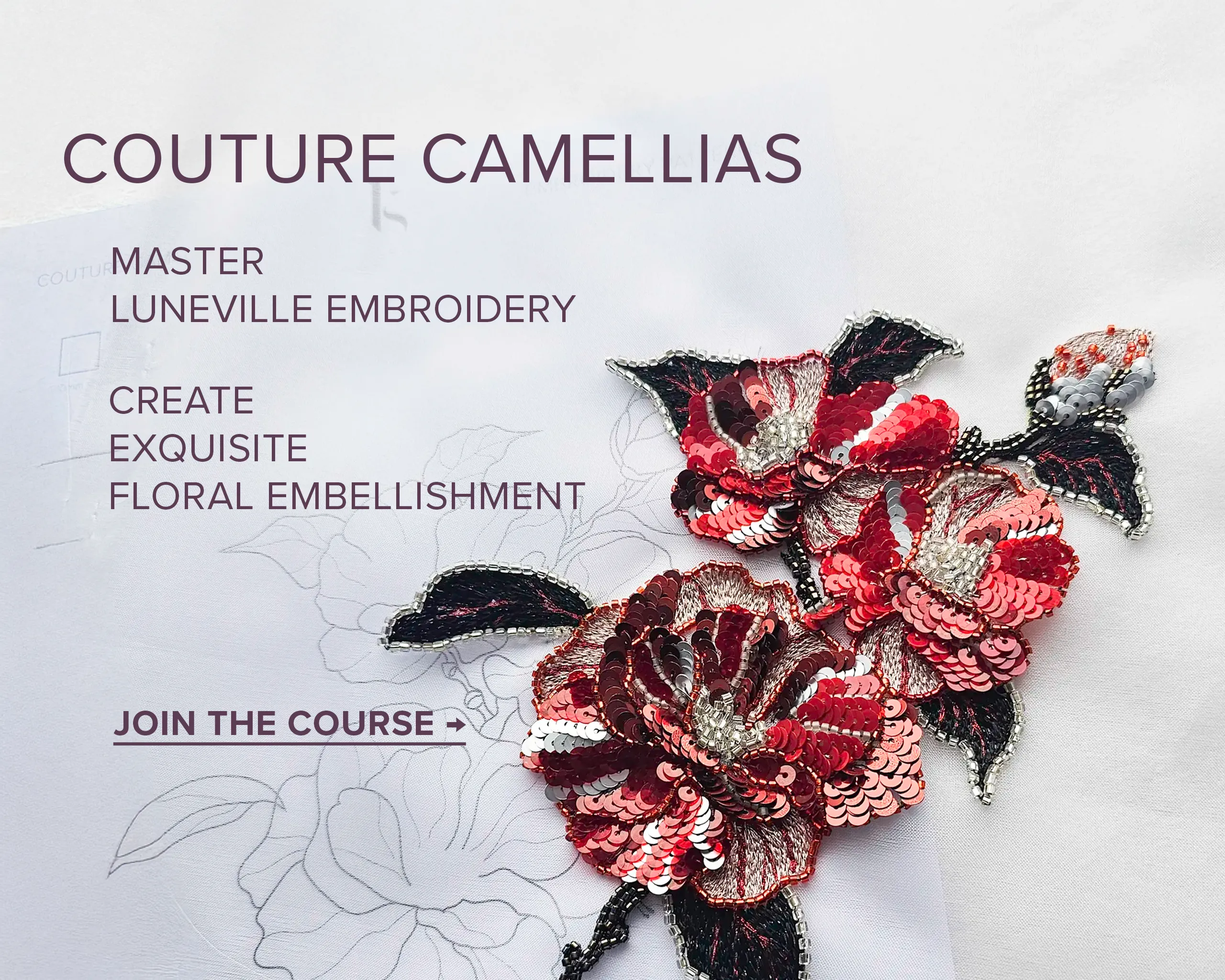
From Student to Teacher
Explore My Own Embroidery Courses
After completing this course, I began developing my own embroidery classes—bringing together traditional couture techniques with contemporary fashion and floral design. Are you interested in learning embroidery in a clear, structured way (with wearable results)?

